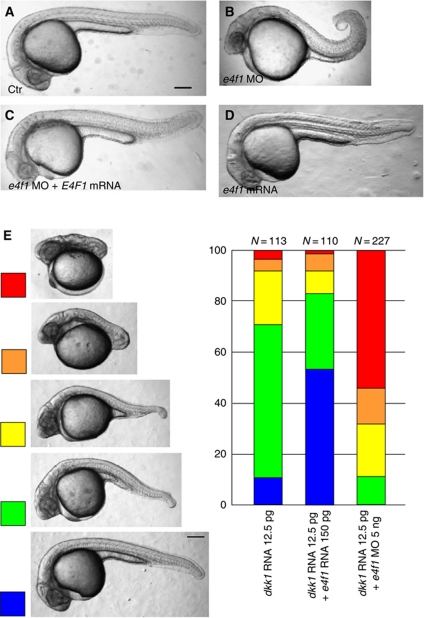Figure 1.
Depletion of E4f1 causes caudal defects. (A–C) The tail defects of e4f1 morphants (e4f1 MO; 5 ng) were largely rescued by injection of 100 pg of human E4F1 mRNA. Injected reagents are shown at bottom left. (B) Tail shortened and kinked in 74% of embryos (n=159). (C) Most embryos showed rescued tail (69%, n=160). (D) Overexpression of E4f1 by injection of a similar level of zebrafish e4f1 RNA as used in the rescue experiment (C; 100 pg) did not cause a visible phenotype. (E) A moderate amount of dkk1 mRNA (12.5 pg) was injected alone or together with e4f1 mRNA (150 pg) or e4f1 MO (5 ng). Tail defects were classified into five levels at 26 h.p.f. Enforced expression of E4f1 mitigated tail defects due to Wnt inhibition, whereas e4f1 MO injection aggravated the effect. Numbers of embryos (N at top) are based on three independent experiments. Lateral views of embryos at 26 h.p.f. Scale bar, 200 μm.

